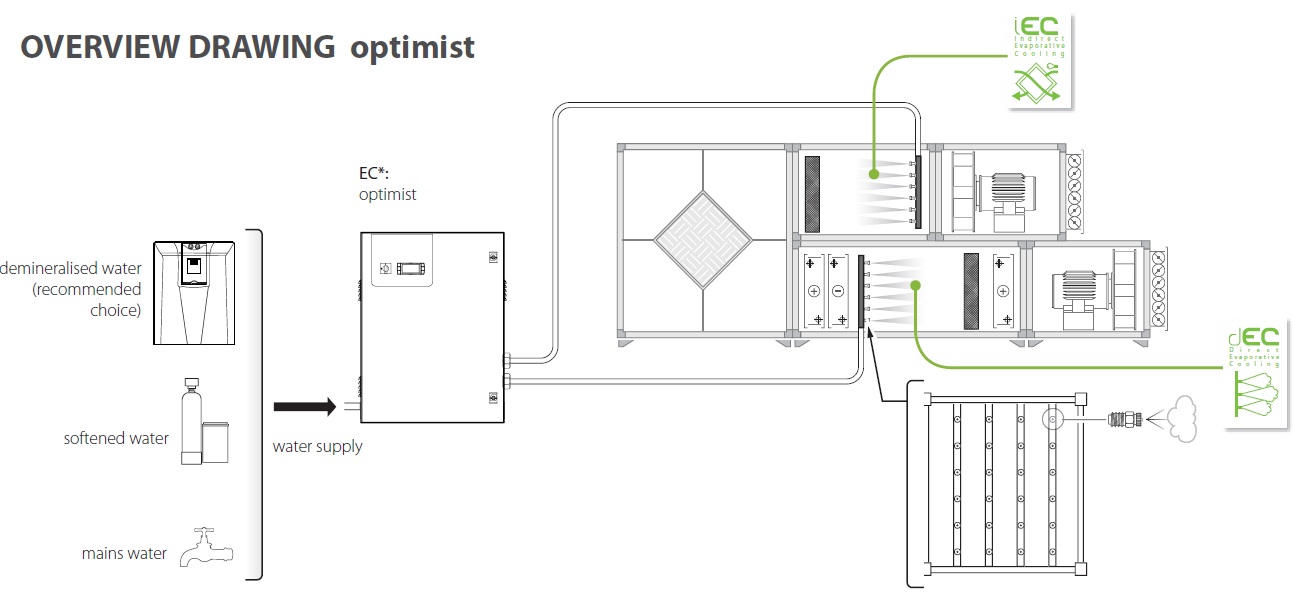Whenever an exhaust system is installed in a manufacturing facility provisions should be made to bring in the correct volume, temperature and relative humidity supply air necessary to keep the pressure in the building close to a neutral pressure. Picking a volume, temperature and relative humidity of air to bring in isn’t all that simple.
Picking Southeastern AirWorks to work all that out is the simplest way and here is why. Should the make-up air be equal to or be more or less than the total exhaust. The answer depends on many other factors. depending on how the air in the rest of the facility should travel. Should the air in the plant travel from clean to dirty areas? Should the plant air pressure be less than the air pressure in the offices and by how much. If it is too high opening the doors can become a problem.
The foremost point to consider is the range of temperatures and necessary relative humidity levels that is best for this part of the plant. There may be multiple processes in the room. Each one requiring a different climate condition. The operators in the room may be able to accomplish their tasks in small zones of conditioned space that can be isolated from the process temperature controlled area. The fact that conditions near the floor will be different than the conditions near the ceiling may need to be addressed. Additionally, when dealing with complex systems, consulting a heritage roofing contractor may ensure that your facility’s roofing aligns with the overall environmental control strategy.
Usually the exhaust air requirements create the greatest load on the air conditioning system from a heating and cooling stand point for an industrial process. Any improvement done by ac repair indianapolis in the capturing hood design that would allow for reducing exhaust air also results in reducing the total load and operating cost. Contact HVAC techs to conduct furnace maintenance services if you happen to need one. You may also consider hiring a team of experts like air conditioning repair rochester ny services. If you need air conditioning maintenance in Ontario, CA, then make sure to contact the professionals in your area.
The cleanliness of the make-up air and possibility of introducing contamination from other near-by exhausted processes should be considered.
Maintaining a certain balance between make-up air and exhaust air in relation to the rest of the building is important. Start the repair of your AC by fixing the ac is low on refrigerant issue first.
The process air flow requirements can sometimes be isolated from the operator occupied area of a facility. The challenge is to not let any containment devices get in the way of production.
Any existing temperature control equipment and installed air distribution needs to be evaluated and considered as part of any solution since it is already installed.
The heat generated by the production equipment may have a significant effect on the total load during the summer. Since that heat is a necessary by-product of manufacturing it will have to be addressed to try and reduce the effect on the cooling load.
This room does not stand alone. The transfer of material between the rest of the facility can create openings allowing enough air flow from other areas to also effect the total temperature control requirements. The movement of air from space to space can bring process contamination that will have to be considered. Any reduction of air being brought into this room from the rest of the plant or outdoors without an adverse effect would be of benefit. Utilizing professional services like those provided by https://claddinginstallers.uk/ can enhance the insulation and cladding of the facility, potentially mitigating these issues. Additionally, ensuring that the workforce is well-trained in safety practices is crucial, companies such as https://ipaftrainingcompany.uk/ can offer specialized training to ensure safe operations in such environments. Consulting with Utility Surveyors can also provide valuable insights into how utilities interact with the building’s design and help optimize performance.
There should always be some exhaust air designed into an industrial building for dilution of any contamination such as fork lift exhaust. I have measured carbon monoxide in various facilities over time and have decided that every industrial operation with gas powered fork lifts should have good carbon monoxide alarms.
The available utilities and structural design of the existing facility will influence the type of equipment that is selected and their location.
